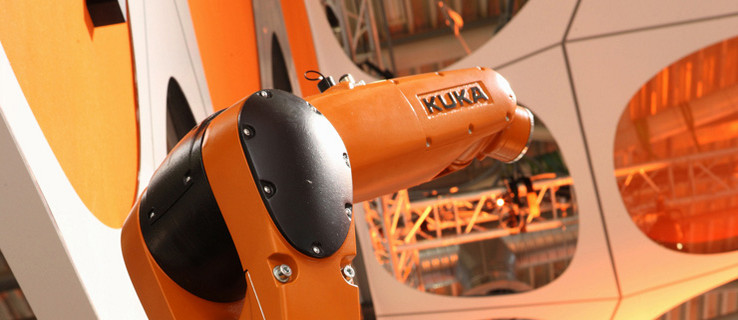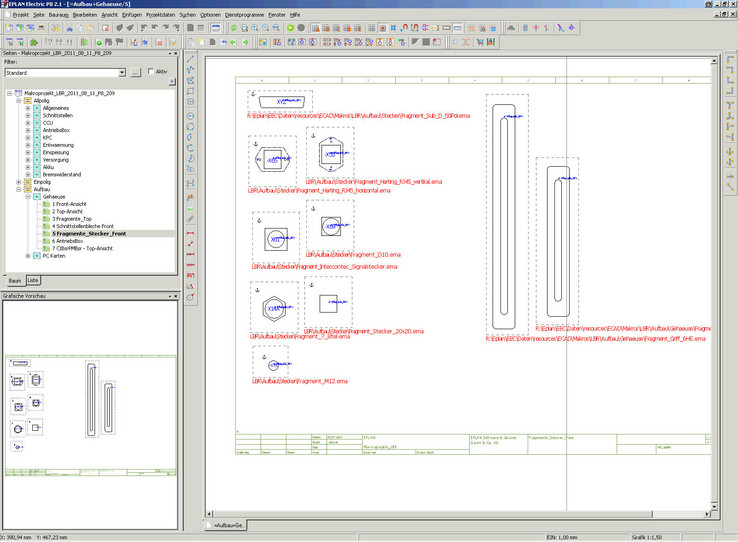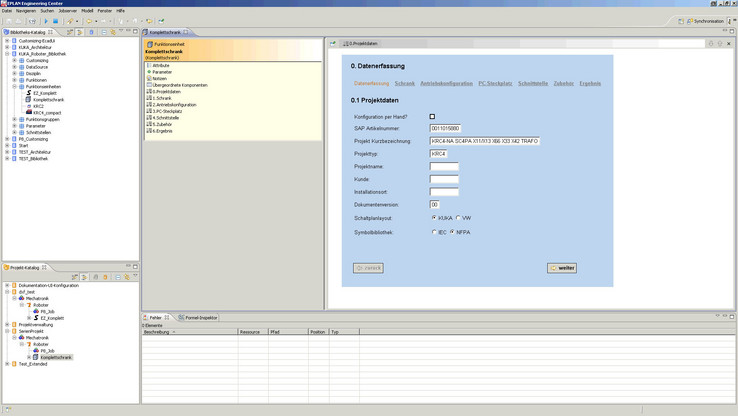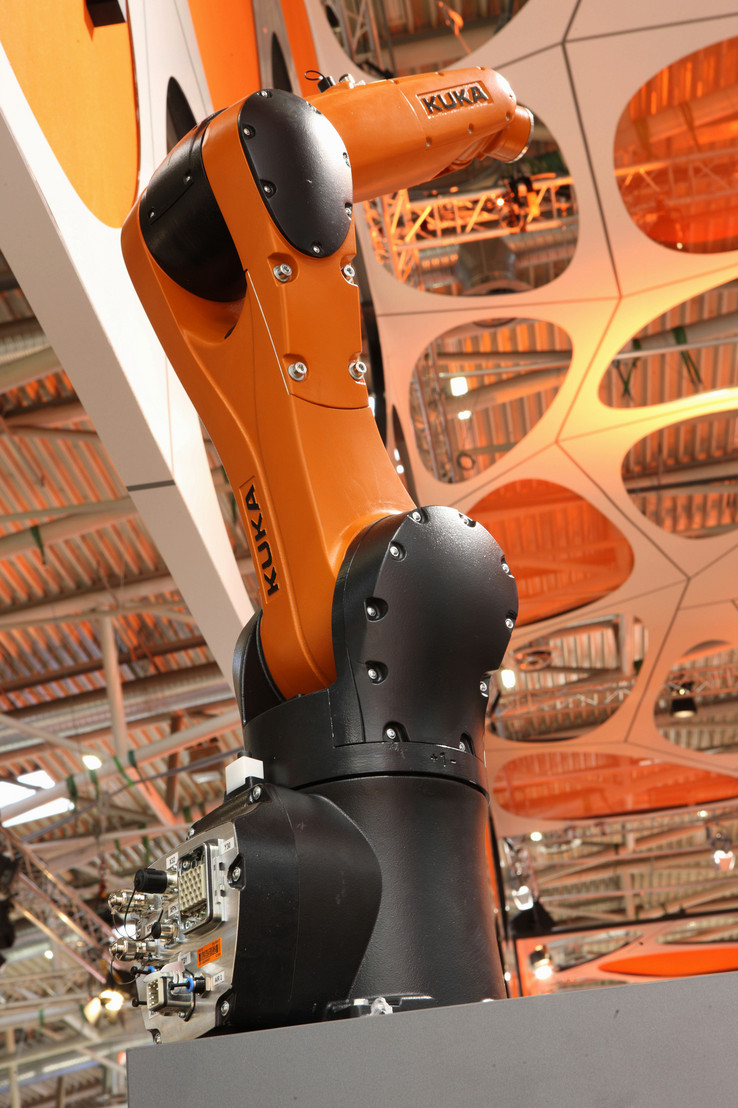EPLAN Engineering Center as the basis for the KUKA cabinet configurator
As the largest robot manufacturer on the German and European markets, KUKA Roboter GmbH is always working on a large number of projects – including electrical design.
It is only logical that a robot manufacturer should automate the design and production of their products – after all, robots are the symbol of industrial automation. KUKA Roboter GmbH is very progressive in this area and has now begun creating its electrical design wiring diagrams fully automatically, i.e. without the intervention of a design engineer, as long as the customer needs only the standard options. EPLAN Engineering Center (EEC) is directly connected with Enterprise Resource Planning (ERP) at KUKA, and is a precondition for this innovative, time-saving method of working. Starting point: the cabinet configurator
The EPLAN Engineering Center (EEC), which, in simple terms, stores the E-CAD data for all relevant modules and assemblies, was implemented simultaneously with the migration to EPLAN Electric P8 and the EPLAN Platform which was new at the time. It was an advantage to KUKA's design engineers that all the robot models and sizes were controlled via a common series of controllers, known as KR C4. Since that time, the electrical design engineers have no longer been involved; a control cabinet is used instead of a standard robot. The control cabinet practically designs itself. How this all works is explained by Alexander Rottmair, electrical designer at KUKA responsible for EEC modular development: “We stored all the modules and functionalities we had designed with EPLAN Electric P8 in the EEC with their associations. The modules are selected according to the configuration of the robot required by the customer, retrieved and linked together.” The circuit diagram is immediately automatically generated
Automation goes even further: the modules are even interlinked automatically in the background while the job is being generated. Alexander Rottmair: “Our sales engineers and customer advisors work with a SAP-based electronic sales configurator in which they enter the robot models and the standard options. The circuit diagram is drawn up automatically thanks to the link between SAP and EEC directly these details are entered.” This process only takes about five minutes so that, in theory, the customer can see the complete circuit diagram even before the ink is dry on the contract. As soon as the EPLAN Engineering Center has generated the specific circuit diagram, the data is sent back from the EEC to the SAP system. This means that Enterprise Resource Planning has all the data, such as the part numbers of the components required, and can order the components required or take them into consideration in production planning, all automatically of course. One press of a button is enough …
KUKA has made so much progress with the automation of the creation of circuit diagrams that even options that have a fundamental influence on the entire electrotechnical design are simply entered in the cabinet configurator with a click on a button. This is true for the selection of the bus system desired, for instance, or the choice of interfaces with which the robot communicates with the upstream and downstream machines. Here one input during the discussions with the customer is sufficient, and an appropriate circuit diagram is drawn. From the electrical engineers' point of view, this means: When only standard tasks are required, the EEC takes on their tasks just like robots automate production. Thorough preparatory work is needed
We must not fail to mention the fact that thorough preparatory work is required if you wish to enjoy the benefits of the automated generation of control cabinet as comprehensively as KUKA does. Alexander Rottmair initially designed a basic cabinet that is used as the foundation on which the configuration is built. In the next step, he defined some 500 optional modules which were then uploaded into the EPLAN Engineering Center. And this work goes on as new options are continually being added: “We have recently also standardized the power supplies and saved them to the EEC.” Data exchange with original equipment manufacturers
Of course, this automation of planning is possible only if the user selects from the standard options. This is why the designers do not necessarily have less work to do than before, but the work they do have has become more demanding. Alexander Rottmair: “We now only have to deal with actual design tasks, i.e. of creating custom requirements for options and functions.” The standard circuit diagrams from the EPLAN Engineering Center are also used as a basis in this work. In addition to this, the plant engineers with whom KUKA collaborates also use the data generated in the EEC. They integrate the robots into complete installations, such as welding lines and painting stations and use the circuit diagram in the documentation. New series of controllers: Tried-and-tested principle is extended
This principle has already proved successful in practical applications: both the designers and the sales engineers are very happy with it. Alexander Rottmair described the situation: “We presented the compact series of KR C4 controllers for the first time at Automatica 2012: a stackable, very compact control system for small robots that can be built into 19” control cabinets.” The KR C4 compact makes it clear that modern design principles also have an influence on the construction of machinery and installations. The new compact controller is – just like the electrical circuit diagrams in the EPLAN Engineering Center – built up in a fully modular method. This allows flexible installation and, consequently, simple expansion of functions in accordance with the user's wishes.
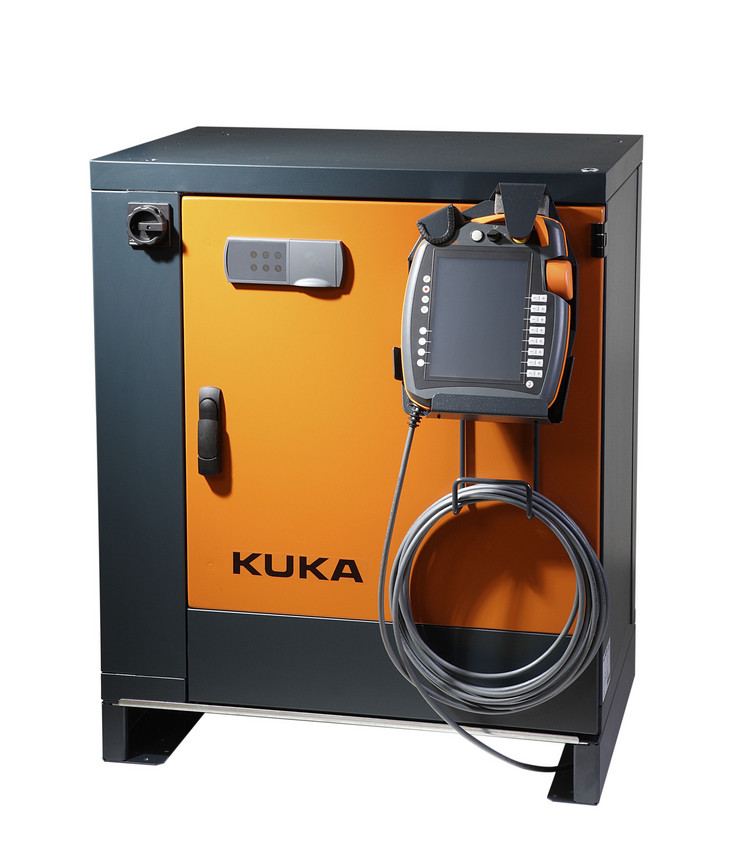
One control system for all tasks: all the standard options for the KRC 4 are defined in the cabinet configurator and passed to the EPLAN Engineering Center which then automatically draws up the custom circuit diagram.
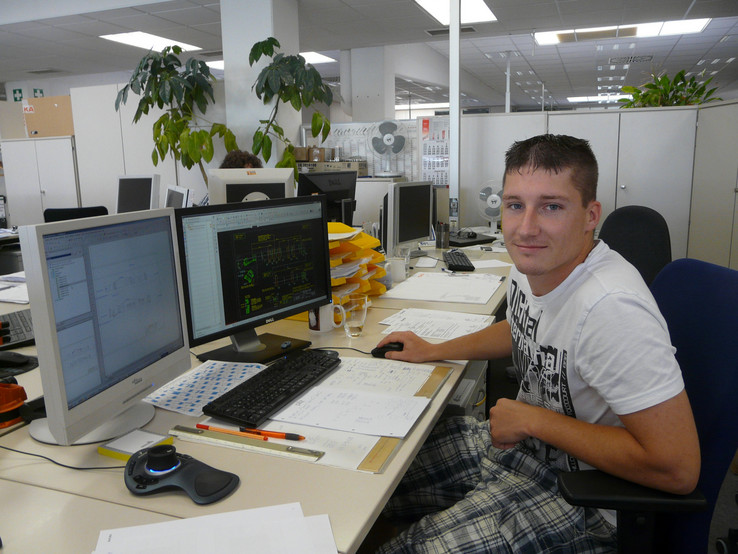
Electrical design engineer Alexander Rottmair is responsible for the automated creation of circuit diagrams using the EPLAN Engineering Center at KUKA.


